During one of my workshops last month a student shared a story about bees that he’d capture in his younger days. The bees never stung him and I was curious to know more. He lived in California at the time. He and the other kids called these bees “H-bees” because of the H-shaped marking on their backs.
I thought about the different bees I’ve encountered and couldn’t come up with a mental image of one with an H-marking on its back. But I have encountered numerous flies with these markings.
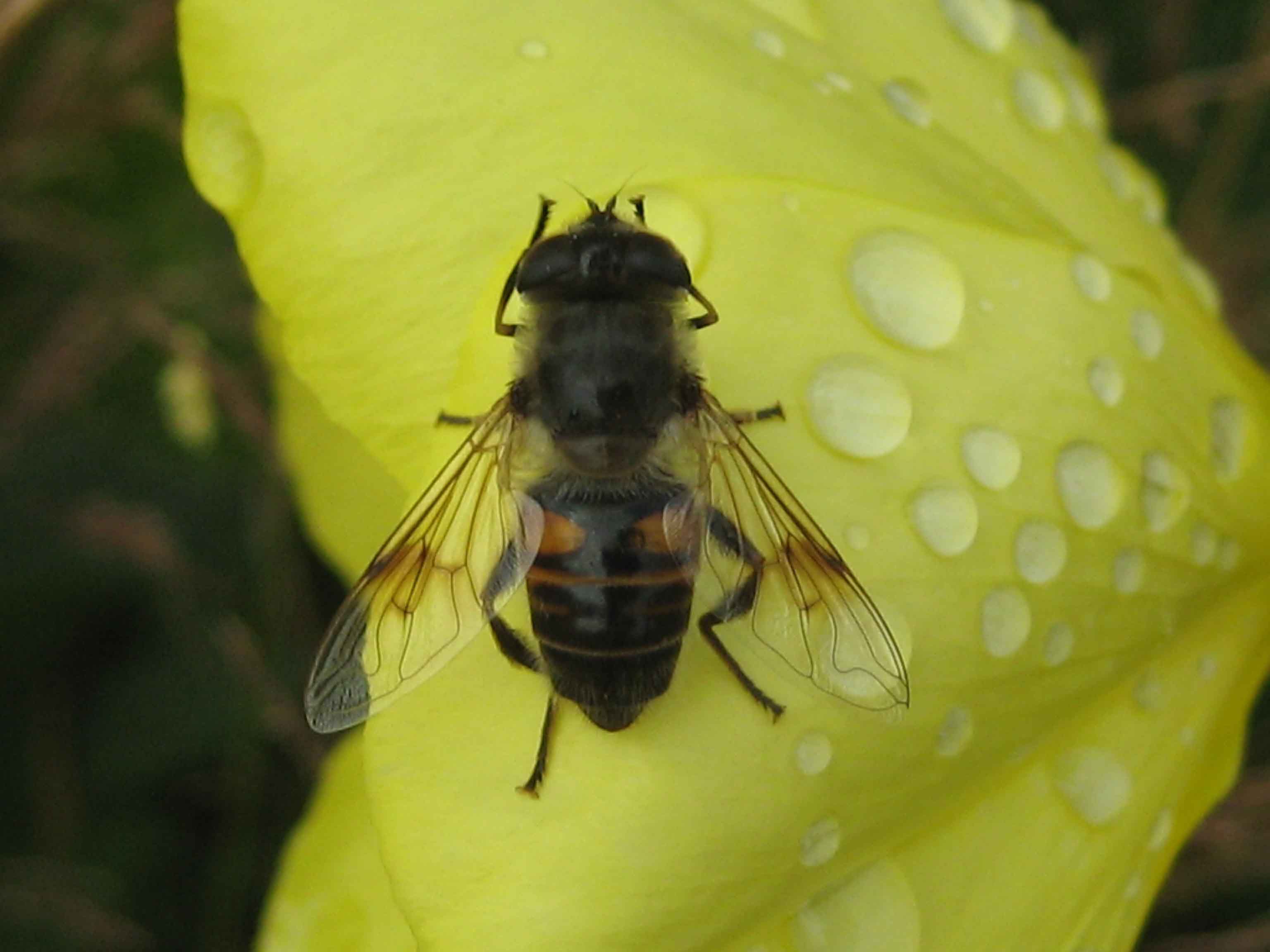
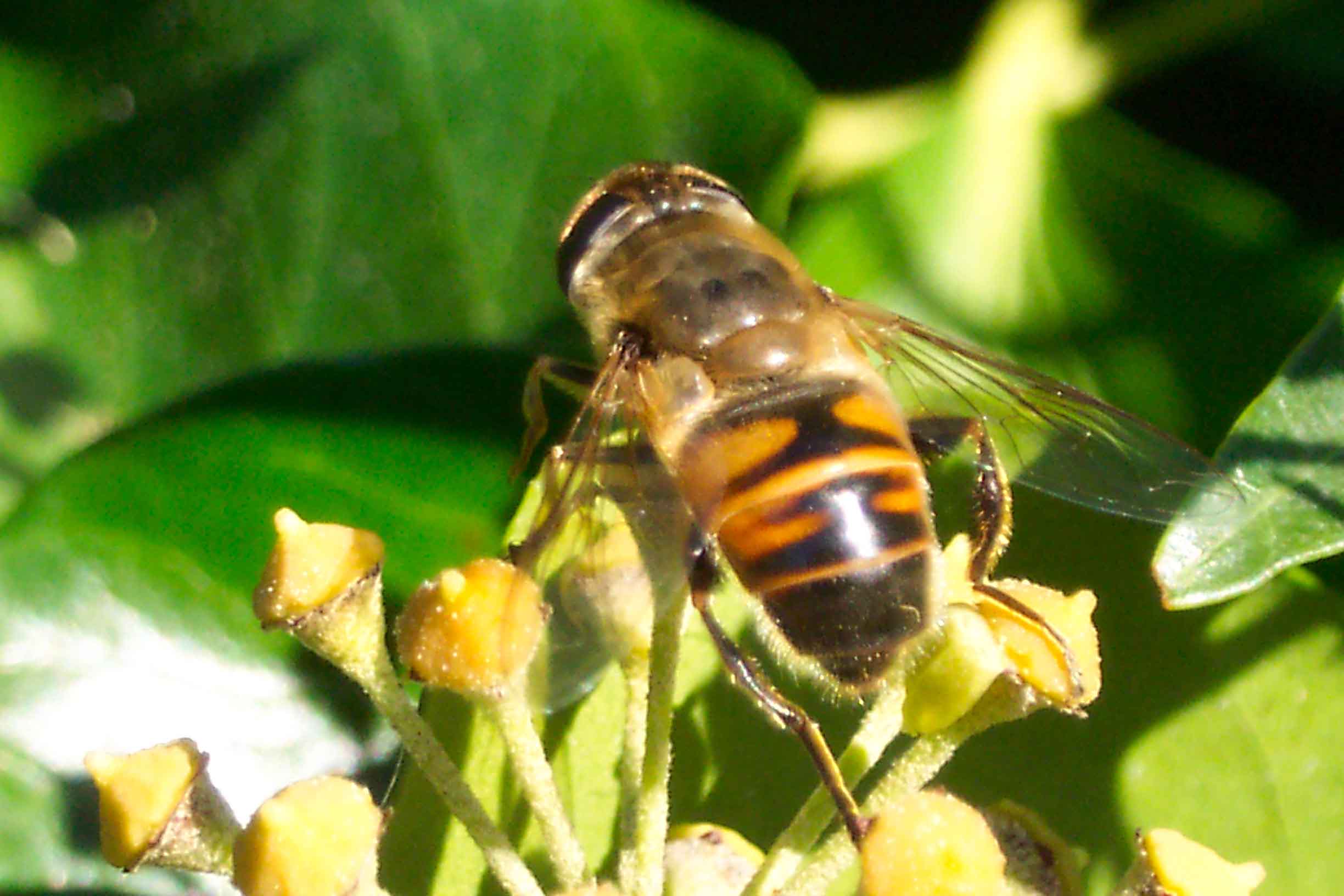
There are many kinds of flies who look like bees. There are those like the ones above that are reminiscent of a honey bee. Others, like the two below, look a lot like bumblebees.
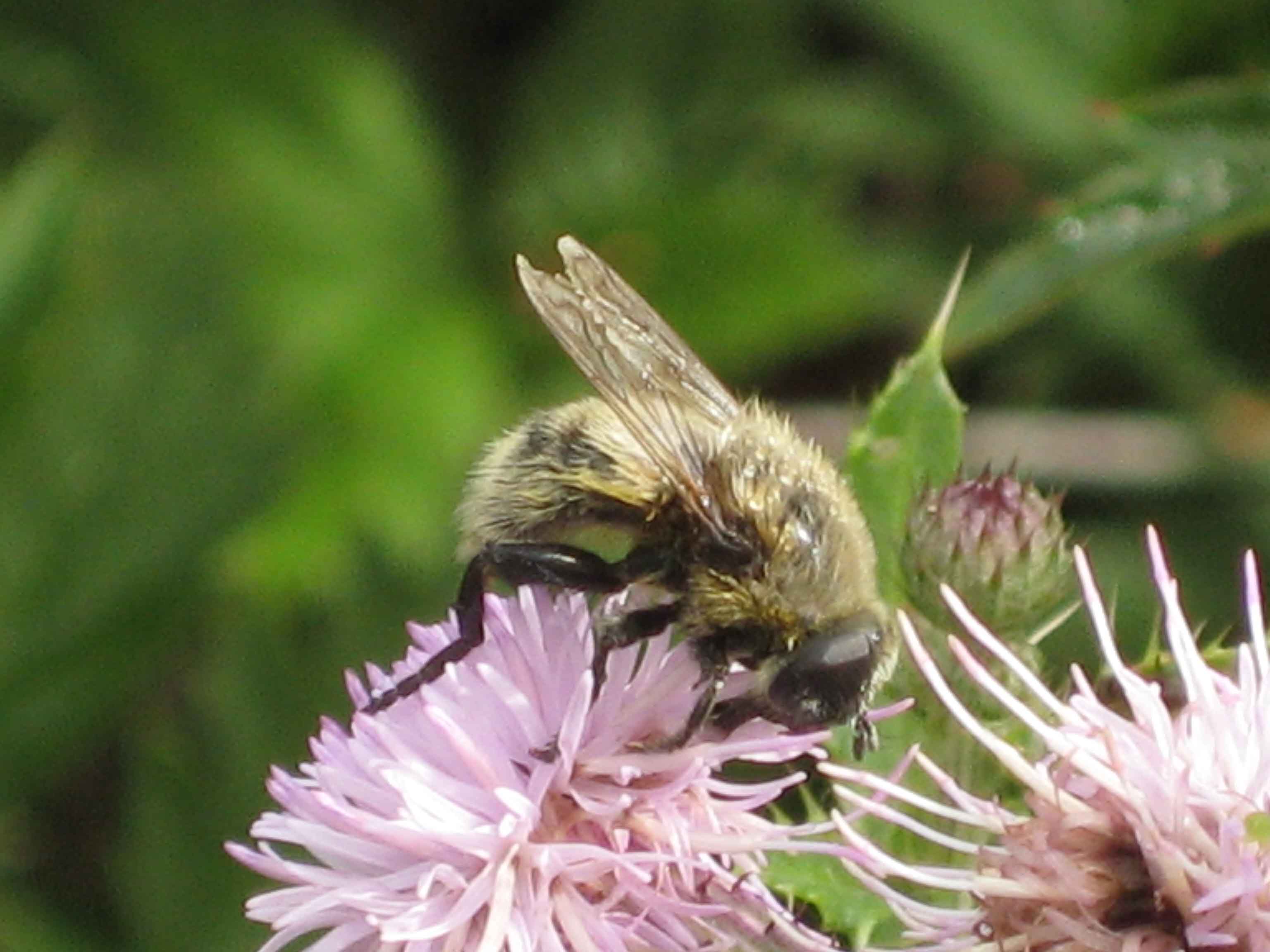
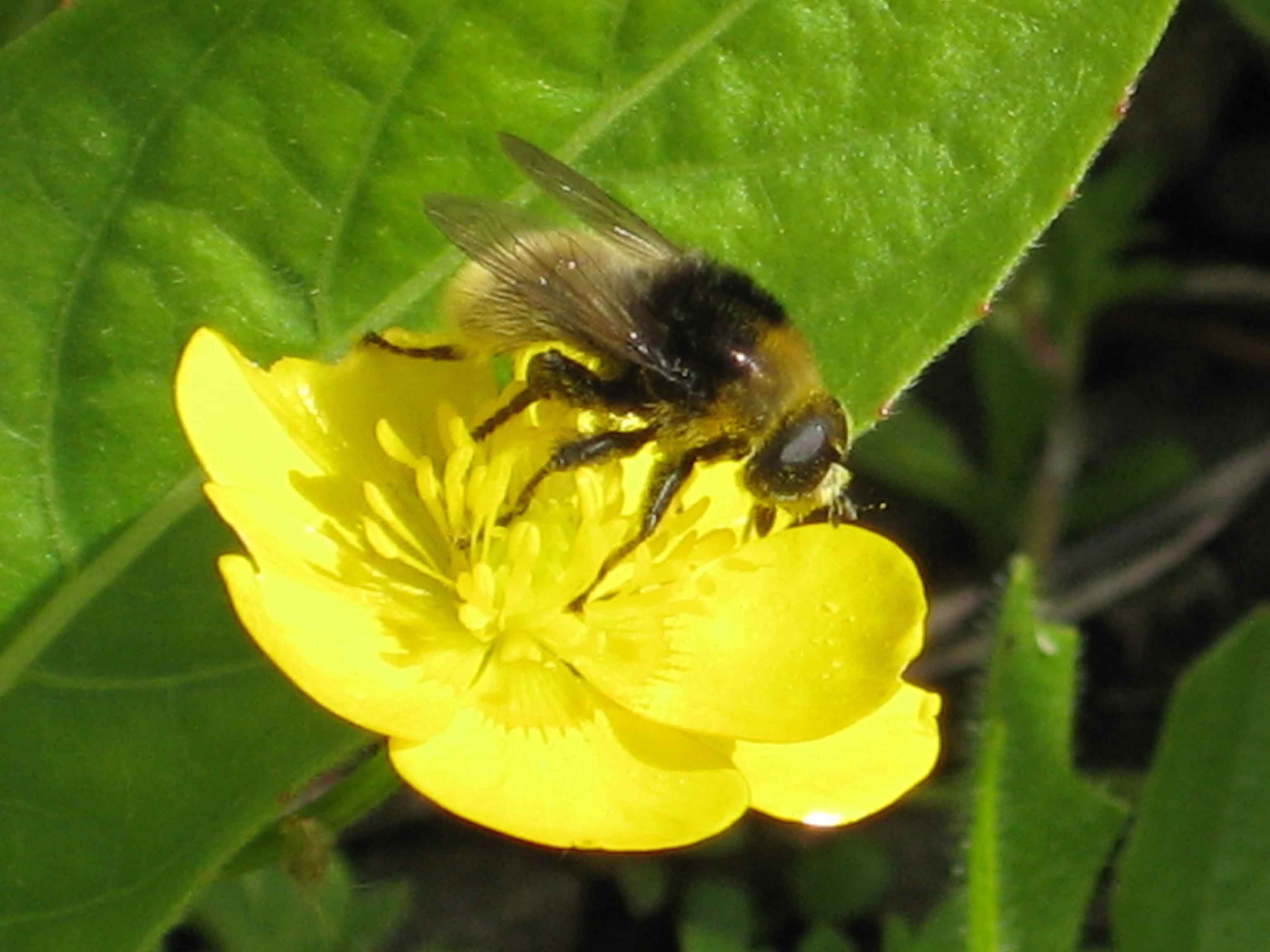
Flies and bees are quite different. The two most obvious differences are between the size of the eyes and the length of the antennae. On the left is the front view of a fly. The gray areas are the eyes – they are very large and there are only two. The little black nubs are the antennae. On the right is the front view of a bee. The main eyes are smaller than those of a fly, and there are extra eyes on the top of the head. The antennae are long and easy-to-see.
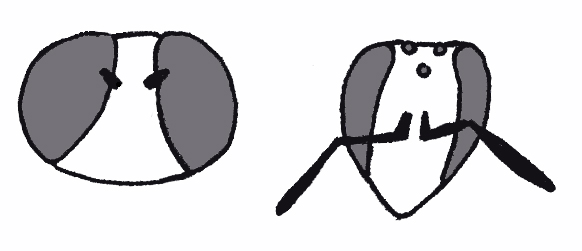
Flies are often viewed with distaste because of their relative abundance and bad press. Don’t let this fool you! Flies are important pollinators! They are out earlier in the season (I saw my first fly in January) and many of them love nectar. And, just because they are abundant now doesn’t mean they always will be.
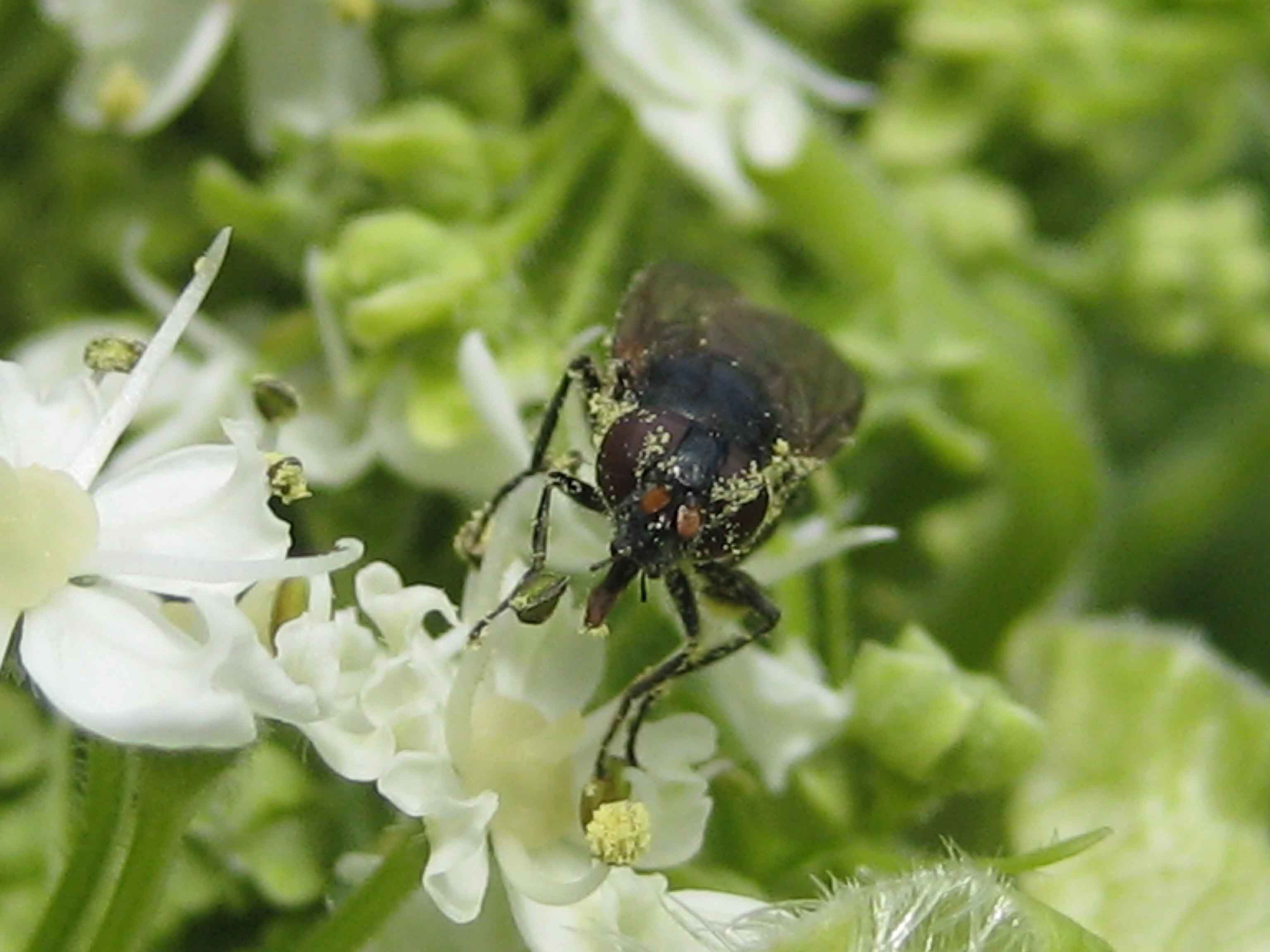
{ 11 comments }
Thank you for clarifying this!
As a young child growing up near the S.F. bay area, we used to see these all the time, yet have never seen them since.
I am 67 years old and grew up in southern California. As children, we also caught the H-Bees (that is exactly what we called them and believed them to truly be bees, not flies) because we knew they wouldn’t sting. They could always be found on the pyracantha bushes which were so commonly used in California landscaping. I always wondered about them; where have they gone? This prompted me to go online where I found your website. Thank you for the information!
I lived in Pomona, California at my Grandmother’s house when I was a young girl. The next door neighbor girl, Shelly – and I used to go over across the street to a neighbor’s house and catch “H” bees all the time. They never stung us and we spent hours doing it. I shared this story with a lady who keeps bees here in Farmington, New Mexico where I live and she had never heard of these “bees” either. It got me to thinking about it so I decided to look it up on the Internet and have been surprised to find some of the info that says these may be “flies.” They sure didn’t look like flies – that’s for sure!
Hi. 40 or so years ago, also in central California we would catch these H-bees and put thread around them and let them fly. They were our own personal kite. We never got stung and they were not flies. We would do this over and over again never harming the bees. I remember they were only in a certain area close to where I grew up. Any one have any idea where they went?
we caught H bees all the time in socal as a kid. Def a bee, not a fly. Would love to know why theres so little info about them and if they still exist.
I grew up in the early sixties in Downey, California. We had bees that didn’t sting, they had an H instead of stripes and they were definitely bees. During the late seventies we had nightly spraying of Malathion at night for fruit flies, after that many insects just disappeared like the Potato bug and large June bug). From grade school through College and 1986 thru 1996 working for southern California Edison as a Lineman in the Whittier District. Working out doors digging in the dirt and climbing poles in and around my home town was a great chance to see a lot of Insects, I just wish I had taken more pictures. Thank you!!!
Hi. I’m one of those Southern Californians who used to catch “H-bees”. They typically hung out around a bush in my neighbor’s yard; can’t remember the name of it but it was something with small white buds and flowers.
I’m really repulsed by the possibility that we were catching flies instead of bees, so my memory may suddenly be tainted, LOL. That said, I think I had enough experience with flies to know the difference. None of the flies pictured look like what I remember, particularly the H, which was large and very clear. Also, flies are fast and these things were slow…
If you ever run across a bee that might be an H-bee, hope you’ll post it. Thanks.
Hi Karin,
I certainly don’t know all the bees out there! There could be an H-bee! 🙂 I’ll keep an eye out for it and will definitely share it here if I find it. 🙂
Julie
Karin,
I too, used to catch H-Bees in Southern California. I remember sitting watching them to see if they behaved differently from the bees with just parallel stripes. I was young of course, but there is little to no doubt that those were bees. Their bodies were shaped nearly identical to the stinging bees. In fact that’s the reason we had to look so closely at their backs so as to not get stung.
I have a friend who thinks they’re a myth. I would love to find some evidence of them, but the local ecosystem has been devastated over the past 40 years and bees are much more scarce. Not as bad as the 100’s of frogs we used to see around, now there are “0”. The Lizards only just came back a few years ago. 🙁
this one found on a friends Scotch bonnet chili – in southern UK. So not just California, then.
lady repulsed by the thought of flies – read the test please. Not all garbage lovers!!
https://www.google.co.uk/search?q=bee+fly+images&biw=1280&bih=899&tbm=isch&tbo=u&source=univ&sa=X&ei=-48eVM_gAYm7ygO9y4DIBQ&sqi=2&ved=0CDcQ7Ak#facrc=_&imgdii=_&imgrc=_n_HD8uuHJ7vQM%253A%3BmkNNhsm2xA3bfM%3Bhttp%253A%252F%252Fwww.beementor.com%252Fwp-content%252Fuploads%252F2012%252F03%252FH-Bee-fly.jpg%3Bhttp%253A%252F%252Fwww.beementor.com%252Fthey-are-not-all-bees%252F%3B2448%3B1632
Thanks for commenting, Val. I’ll bet you’ve got some gorgeous bees *and* flies out your way!
I wouldn’t be too hard on any American who is put off by flies. We’re brought up to think of them as icky creatures. That’s part of the reason I wrote this article – to help show that, like you said, they’re not all garbage lovers. (But even the garbage lovers are an interesting bunch. Some of them are beautifully colored, and they play a vital role in decomposition.)